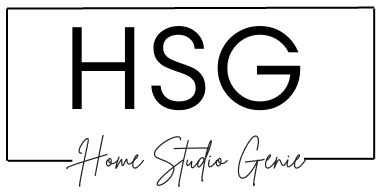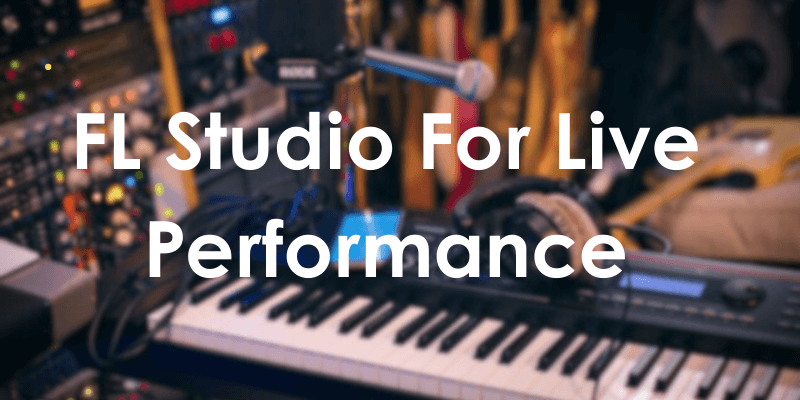Are you ready to unleash an electrifying live performance that will leave your audience spellbound? Look no further than FL Studio For Live Performance. This powerhouse digital audio workstation (DAW) is not just for music production; it’s a game-changer on stage.
In this article, we’ll be looking into how to use FL for your live performances to turn your musical vision into a breathtaking reality.
Let’s get started.
Can You Use FL Studio For Live Performance?
Yes, FL Studio can be used for live performances. It’s important to understand the limitations and challenges that come with using FL Studio for live performances.
FL Studio’s performance mode is designed specifically for live performances, such as concerts or performance shows.
It allows you to trigger patterns and clips in real-time, tweak parameters, and apply effects to your sounds.

However, using FL Studio for live performances requires a bit of preparation and planning.
You need to create a set list, organize your patterns and clips, and make sure everything is properly synced and mapped to your MIDI controller or keyboard.
You also need to be familiar with FL Studio’s interface and workflow.
It’s also a good idea to have a good understanding of music theory and performance techniques.
If you’re considering using FL Studio for live performance, you’re not alone. Many musicians and producers have successfully used FL Studio to perform live.
There are some important things to keep in mind when setting up your performance environment and preparing your tracks for live performance.
Setting Up Your Performance Environment
The first step to using FL Studio for live performance is to set up your performance environment.
This includes selecting and setting up your hardware, such as MIDI controllers and audio interfaces, and configuring FL Studio to work with your hardware.

You’ll also need to consider your physical setup, such as how you’ll position your gear and how you’ll interact with your audience.
Some tips for setting up your performance environment include:
- Choosing a reliable laptop or computer
- Using a high-quality audio interface
- Mapping your MIDI controllers to FL Studio’s performance mode
- Positioning your gear for easy access and visibility
- Considering your lighting and stage setup
See Also: 12 Common Problems with FL Studio (Fixed)
Preparing Your Tracks for Live Performance
Once you’ve set up your performance environment, you’ll need to prepare your tracks for live performance.
This includes organizing your tracks into patterns and arranging them in FL Studio’s performance mode.

You’ll also need to consider how you’ll trigger and control your tracks during your performance.
Some tips for preparing your tracks for live performance include:
- Organizing your tracks into patterns for easy access and triggering
- Creating custom templates for your performance setup
- Using FL Studio’s performance mode to arrange your tracks
- Mapping your MIDI controllers to trigger and control your tracks
- Considering your tempo and key changes during your performance
Controlling Your Performance with FL Studio
Finally, you’ll need to consider how you’ll control your performance with FL Studio.
This includes mapping your MIDI controllers to FL Studio’s performance mode.
It would also include setting up automation and effects. This means more practice for your performance to ensure everything runs smoothly.
Some tips for controlling your performance with FL Studio include:
- Mapping your MIDI controllers to FL Studio’s performance mode for easy access and control
- Setting up automation and effects to enhance your performance
- Practicing your performance to ensure everything runs smoothly
- Considering backup plans in case of technical difficulties.
With that said, let’s jump straight into our next point.
Tips and tricks for using FL Studio for live performances:
Use a Dedicated Computer
To ensure maximum performance and stability, it’s a good idea to use a dedicated computer for your live performance setup.
This computer should meet or exceed the recommended system requirements for FL Studio.
Use a MIDI Controller
A MIDI controller can make it easier to trigger patterns, clips, and samples during a live performance.
Consider using a good controller with pads or buttons that can easily be assigned to specific parameters in FL Studio.
Limit the Number of Plugins
To minimize the risk of technical difficulties during a live performance, it’s a good idea to limit the number of plugins you use in FL Studio.
Stick to the essentials and avoid running multiple instances of resource-intensive plugins.
Practice, Practice, Practice
Like any live performance, practicing is key.
Spend time rehearsing your live set in FL Studio and make sure everything is working properly before you take the stage.
Streamline Your Workflow
Optimize your workflow in FL Studio to ensure a smooth live performance.
Organize your patterns, samples, and clips in a way that allows for easy access and quick triggering.
Consider creating custom templates or presets to speed up your workflow during a performance.
Consider Your Hardware Setup
Pay attention to your hardware setup and connections.
Make sure your audio interface is properly configured and that all cables are securely connected.
Test your setup thoroughly to avoid any surprises during your live performance.
Use Automation and Effects
Take advantage of FL Studio’s automation and effects capabilities to enhance your live performance.
Create dynamic changes in volume, panning, and other parameters using automation clips.
Experiment with effects to add depth and texture to your sound.
Backup Your Projects
Always have a backup of your FL Studio projects. Whether it’s on an external hard drive or in the cloud, having a backup ensures that you can recover your work in case of any technical mishaps or hardware failures.
Test Your Performance Setup
Before your actual live performance, take the time to test your entire setup.
Run through your set list, making sure all patterns, clips, and samples are triggering correctly.
Check for any latency or audio glitches and address them accordingly.
Engage with Your Audience
Remember that live performances are not just about the music, but also about connecting with your audience.
Engage with them, interact, and create an atmosphere that enhances the overall experience.
Use FL Studio’s performance mode to control and manipulate your music in real time, adding a personal touch to your performance.
See Also: How Long Does It Take to Learn FL Studio? (14 Considerations)
Pros and Cons of Using FL Studio for Live Performance
Pros of Using FL Studio for Live Performance

There are several benefits to using FL Studio for live performances, including:
- Flexibility: One of the biggest advantages of using FL Studio for live performance is its flexibility.
You can customize the software to fit your specific needs like creating custom templates, assigning MIDI controllers, and programming custom scripts. - Visual Interface: FL Studio’s visual interface allows you to see all of your instruments, effects, and mixer channels in one view, making it easy to keep track of everything during a live performance.
- Performance Mode: FL Studio features a dedicated Performance Mode designed specifically for live performance.
In this mode, you can trigger patterns, clips, and samples using MIDI controllers or your computer keyboard. - Third-Party Plugins: FL Studio supports a wide range of third-party plugins, offering thousands of options for virtual instruments and audio effects. This allows you to expand your setup and incorporate new sounds and effects.
Cons of Using FL Studio for Live Performance
While FL Studio offers many benefits for live performance, there are also some potential drawbacks to consider:
- System Requirements: FL Studio can be resource-intensive, especially when running multiple plugins and effects.
To ensure smooth performance during live shows, you’ll need a powerful computer that meets the software’s requirements. - Stability: Although generally stable, FL Studio is not immune to crashes and bugs.
Technical difficulties during a live performance can disrupt the flow of your show, so it’s important to address any stability issues beforehand. - Learning Curve: FL Studio has a steep learning curve, especially for newcomers.
It takes time to fully grasp all the features and learn how to use them effectively. This learning curve may pose a challenge for some performers.
With that said…
By weighing the pros and cons of using FL Studio for live performance, you can make an informed decision about whether it’s the right tool for your specific needs.
FL Studio isn’t just for music production because it’s a versatile tool for live performances too.
With careful preparation, a well-designed performance environment, and a solid understanding of FL Studio’s features, you can deliver captivating performances that showcase your unique musical expression.
Embrace the possibilities, practice diligently, and let FL Studio take your live shows to new heights.
Sources:
https://www.image-line.com/fl-studio-learning/fl-studio-online-manual/html/playlist_performance.htm
FAQs
Can I use FL Studio with a live band?
Can I use FL Studio on a laptop for live performance?
Yes, you can use FL Studio on a laptop for live performance.
However, you’ll need to ensure that your laptop meets the recommended system requirements for FL Studio and that it’s optimized for live performance.
Can I use FL Studio for DJing?
Yes, you can use FL Studio for DJing. FL Studio has a dedicated Performance Mode that allows you to trigger patterns, clips, and samples using MIDI controllers or your computer keyboard.
How do I optimize FL Studio for live performance?
To optimize FL Studio for live performance, use a dedicated computer, limit the number of plugins, use a MIDI controller, and practice your live set.
Can I use FL Studio for live performance without an internet connection?
Yes, you can use FL Studio for live performance without an internet connection. FL Studio does not require an internet connection to function.
Is FL Studio better than Ableton for live performance?
No, Ableton Live has far greater live performance capabilities than FL Studio. Ableton Live was designed with live performances and live bands in mind.

Mike is a skilled musician, guitar technician, and music producer with a passion for audio and gear. He excels in teaching guitar, editing podcasts/videos, and creating captivating soundscapes using cutting-edge hardware, software, and plugins. Mike’s talent and commitment make him highly sought-after in the industry, inspiring fellow musicians worldwide.


